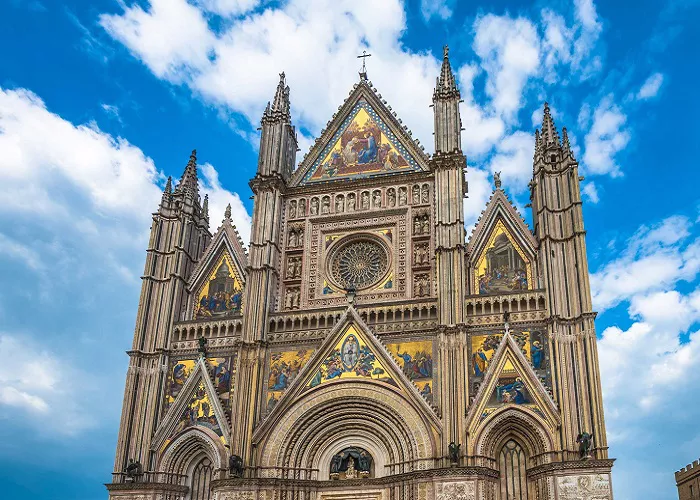The Catholic Church, often perceived as a monolithic institution, is in fact a communion of 24 autonomous churches, known as sui iuris churches. These churches, while united in doctrine and under the leadership of the Pope, celebrate diverse liturgical traditions and cultural expressions of faith. This rich tapestry reflects the Church’s universality and adaptability across different cultures and historical contexts.
The Latin Church: The Western Pillar
The Latin Church, also referred to as the Roman Catholic Church, is the largest and most widely recognized of the Catholic churches. It follows the Latin liturgical tradition and is predominant in Western Europe, the Americas, and parts of Africa and Asia. The Latin Church has been instrumental in shaping Western Christianity and has a significant influence on global Catholic practices.
The Eastern Catholic Churches: A Mosaic of Traditions
Beyond the Latin Church, there are 23 Eastern Catholic Churches, each with its own liturgical rites, theological emphases, and administrative structures. These churches are grouped into six major liturgical traditions:
- Alexandrian Rite: Includes the Coptic Catholic Church, Ethiopian Catholic Church, and Eritrean Catholic Church. These churches trace their heritage to the ancient Christian communities of Egypt and the Horn of Africa.
- Antiochene (West Syrian) Rite: Comprises the Maronite Catholic Church, Syriac Catholic Church, and Syro-Malankara Catholic Church. Originating from the ancient See of Antioch, these churches have a rich liturgical and theological tradition.
- Armenian Rite: Represented solely by the Armenian Catholic Church, which maintains the unique liturgical and cultural heritage of Armenian Christianity.
- Chaldean (East Syrian) Rite: Includes the Chaldean Catholic Church and the Syro-Malabar Catholic Church, with roots in the ancient Church of the East and significant presence in the Middle East and India.
- Byzantine (Constantinopolitan) Rite: Encompasses numerous churches such as the Ukrainian Greek Catholic Church, Melkite Greek Catholic Church, and Romanian Greek Catholic Church, among others. These churches follow the Byzantine liturgical tradition and are spread across Eastern Europe and the Middle East.
Each of these churches brings a unique cultural and spiritual richness to the Catholic communion, reflecting the universality of the Church through diverse expressions of faith.
Liturgical Rites and Their Significance
Liturgical rites are the structured forms of worship and sacramental life within the Church. They encompass the prayers, rituals, and ceremonies that define the spiritual life of a community. The diversity of rites within the Catholic Church highlights its ability to embrace various cultural contexts while maintaining doctrinal unity.
Major Liturgical Rites in the Catholic Church
- Roman Rite: The most widespread liturgical rite, used predominantly by the Latin Church. It has undergone various reforms, most notably the changes introduced by the Second Vatican Council.
- Byzantine Rite: Characterized by its rich liturgical symbolism and chant, this rite is used by several Eastern Catholic Churches and emphasizes the mystery of the Divine Liturgy.
- Alexandrian Rite: Known for its ancient liturgical texts and practices, this rite reflects the heritage of early Egyptian Christianity.
- Antiochene Rite: Incorporates elements from the ancient Christian traditions of Syria and the Middle East, with a focus on poetic hymns and prayers.
- Armenian Rite: Unique to the Armenian Catholic Church, this rite combines elements from both Eastern and Western liturgical traditions.
- Chaldean Rite: Rooted in the ancient Church of the East, this rite is notable for its use of the Aramaic language and distinctive liturgical customs.
These rites are not merely ceremonial differences but represent the theological and cultural diversity within the Catholic Church, allowing communities to worship in ways that resonate with their historical and cultural identities.
Autonomy and Unity: The Balance Within the Catholic Church
The concept of sui iuris churches underscores the Catholic Church’s structure of unity in diversity. Each autonomous church governs itself according to its own laws and traditions while remaining in full communion with the Pope. This arrangement allows for the preservation of unique liturgical practices and ecclesiastical governance, fostering a sense of identity and continuity within diverse cultural contexts.
Examples of Autonomy in Practice
- Maronite Catholic Church: Maintains its own patriarch and liturgical traditions, with a significant presence in Lebanon and among the Lebanese diaspora.
- Syro-Malabar Catholic Church: One of the largest Eastern Catholic Churches, it has its own major archbishop and follows the East Syrian liturgical tradition, primarily in India.
- Ukrainian Greek Catholic Church: Led by a major archbishop, this church has a significant following in Ukraine and among Ukrainian communities worldwide, adhering to the Byzantine rite.
These examples illustrate how autonomy within the Catholic Church enables the preservation and flourishing of diverse traditions, contributing to the Church’s universality.
Global Presence and Cultural Integration
The Catholic Church’s global reach is evident in its adaptation to various cultural contexts. From the ornate basilicas of Europe to the humble chapels in remote villages, Catholic churches reflect the artistic and cultural sensibilities of their communities.
For those interested in exploring the architectural and spiritual heritage of Catholicism, the Famous Churches section on World Attractions offers insights into some of the most iconic and historically significant churches around the world.
Notable Catholic Churches Around the World
- St. Peter’s Basilica in Vatican City: A masterpiece of Renaissance architecture and a central place of pilgrimage.
- Notre-Dame Cathedral in Paris: An iconic example of French Gothic architecture with a rich history.
- Cathedral of Brasília in Brazil: A modernist architectural marvel designed by Oscar Niemeyer.
- St. Mary’s Cathedral in Tokyo: A striking example of contemporary church architecture in Japan.
These churches not only serve as places of worship but also as cultural landmarks, attracting visitors interested in history, art, and spirituality.
Conclusion
The Catholic Church’s structure of 24 sui iuris churches, each with its own liturgical rites and traditions, exemplifies a profound unity that embraces diversity. This model allows for the expression of faith that resonates with various cultures and histories, enriching the universal Church. Understanding this diversity offers a deeper appreciation of Catholicism’s global presence and its capacity to unite believers across different traditions and backgrounds.


